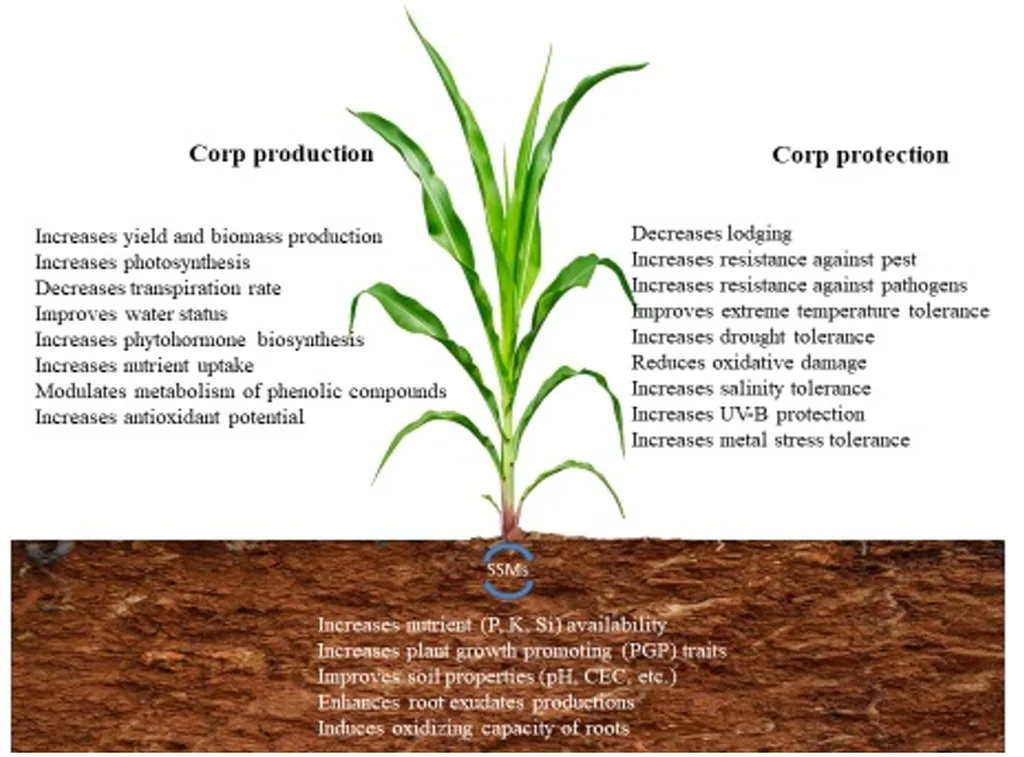In the heart of Nepal, a groundbreaking discovery is unfolding that could revolutionize sustainable agriculture and, by extension, the energy sector. Elina Maharjan, a researcher from the Central Department of Microbiology at Tribhuvan University, has identified novel silica-solubilizing bacteria that could hold the key to more efficient mineral management in plants. This research, published in the esteemed journal *Frontiers in Microbiology* (which translates to “Frontiers in the Study of Tiny Life Forms”), opens up new avenues for enhancing crop productivity and sustainability, with significant implications for bioenergy production.
Silica, a major component of soil, is often overlooked in agricultural practices. However, Maharjan’s work highlights its crucial role in plant health and growth. “Silica solubilizing rhizobacteria can unlock silica from the soil, making it available to plants,” Maharjan explains. “This process not only boosts plant growth but also enhances their resistance to various stresses, including drought and disease.”
The implications for the energy sector are profound. As the world shifts towards renewable energy sources, the demand for sustainable biomass crops—used for biofuels and other bio-based products—increases. Efficient silica management can lead to healthier, more resilient crops, which in turn can improve the yield and quality of biomass. This research could pave the way for more sustainable and productive energy crops, reducing our reliance on fossil fuels.
Maharjan’s study also delves into the mechanisms behind silica solubilization, utilizing advanced techniques like ARDRA (Amplified Ribosomal DNA Restriction Analysis) and 16S rDNA sequencing to identify and characterize the bacteria involved. “Understanding these mechanisms is crucial for developing effective bioinoculants,” Maharjan notes. “These bioinoculants can be applied to crops to enhance silica uptake and improve overall plant health.”
The potential commercial impacts are vast. Farmers could benefit from increased crop yields and reduced input costs, while the energy sector could see more efficient and sustainable biomass production. Additionally, the discovery of novel silica-solubilizing bacteria could lead to the development of new biofertilizers and soil amendments, further promoting sustainable agriculture practices.
As Maharjan’s research gains traction, it is poised to shape future developments in both agriculture and the energy sector. The identification of these novel bacteria and their role in silica solubilization could lead to innovative solutions for sustainable silica management, ultimately contributing to a more resilient and productive agricultural system. With the publication of this research in *Frontiers in Microbiology*, the scientific community is taking notice, and the potential applications are just beginning to unfold.
In a world grappling with climate change and resource depletion, Maharjan’s work offers a glimmer of hope. By harnessing the power of microorganisms, we can unlock new possibilities for sustainable agriculture and energy production, paving the way for a greener, more sustainable future.

